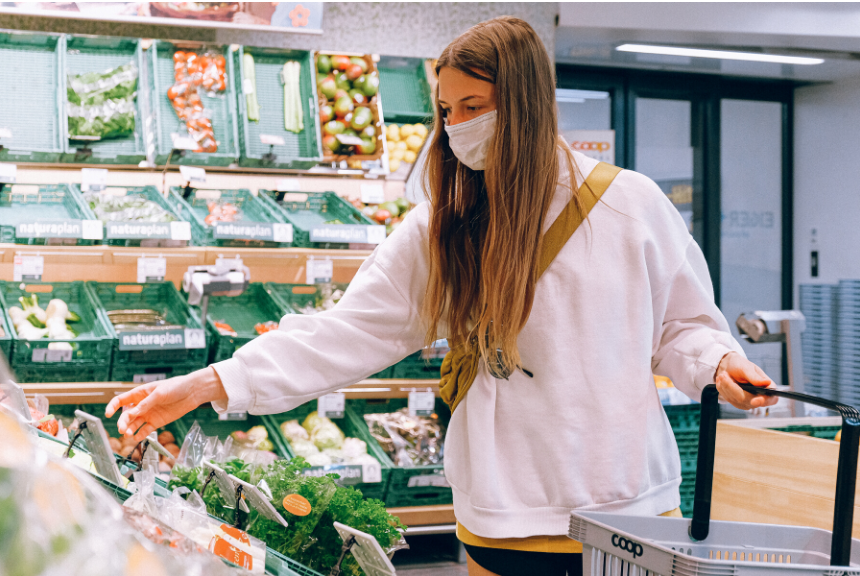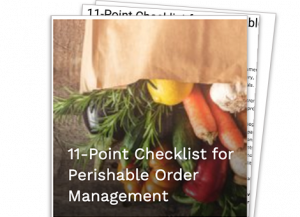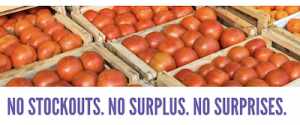What is COVID-19 Doing to the Global Food Industry?
 Following recent dark news that the world’s biggest pork producer, Smithfield, which accounts for 5% of U.S. pork production, shut down its Sioux Falls, SD plant because 230+ workers tested positive, the world can’t help but wonder…
Following recent dark news that the world’s biggest pork producer, Smithfield, which accounts for 5% of U.S. pork production, shut down its Sioux Falls, SD plant because 230+ workers tested positive, the world can’t help but wonder…
What’s COVID-19 doing to the global food industry?
There’s a polar divide between the economic state of foodservice companies right now. Those serving grocery retailers are actually hiring up to double-down on increased orders and deliveries.
Meanwhile, those supplying hotels, restaurants, bars and catering outfits have perishable inventory sitting at ports, spoiling. Or wondering what the heck to do with empty containers returning inland.
 Supplier Shutdown?
Supplier Shutdown?
The last thing the foodservice industry needs on top of this, or any industry for that matter, is more shutdowns of massive supply lines.
Smithfield CEO Kenneth Sullivan shut down their pork plant for 3 days, but was then asked by South Dakota Governor Kristi Noem to stay closed for 2 full weeks:
“It is impossible to keep our grocery stores stocked if our plants are not running,” Sullivan said. “These facility closures will also have severe, perhaps disastrous, repercussions for many in the supply chain.”
Cargill and Tyson Foods have also closed plants in Pennsylvania and Iowa. I’m sure they are not the last.
So What’s Next?
Will beef follow suit? The shortage is not on meat or other food supply; it’s a lack of manpower to pick produce, tend to cattle, move ships, package and deliver food.
Poultry seems to be doing ok, due to its price competitiveness vs. other animal protein sources. Although, they are not in the clear either. Yesterday Lincoln Premium Poultry announced its first case of COVID-19, involving a plant worker in Fremont, NE.
How long will all of this last? No one seems to really commit to a date with any level of confidence. The only real predictions I’ve run across are from Rabobank addressing the global economic impact:
- The global economy will contract by 2.6% in 2020
- In a risk scenario where the global lockdowns would be extended by 3 months, that figure would become 8.9%
- Although in this scenario a rebound is expected in 2021, but global GDP will still end up 6% below its pre-Coronavirus trend
We Are The World
The solution is in global unity. My daughter’s middle school put together a touching video mash-up of their teachers singing, “We Are The World.” I encourage you to go (re)listen to the lyrics. Even though it has been 35 years since USA For Africa blew us away on live TV, there has never been a time when these lyrics were more appropriate...
Border closures, movement restrictions, and disruptions in the shipping and aviation industries have made it harder to continue food production and transport goods internationally -- placing countries with few alternative food sources at high risk. The food industry needs to think about ways to join global forces in this fight.
In an open letter from the Food and Land Use Coalition to world leaders from scientists, politicians and companies like Nestle and Unilever:
“Governments, businesses, civil society and international agencies need to take urgent, coordinated action to prevent the COVID pandemic from turning into a global food and humanitarian crisis.”
Solutions for Foodservice Distributors
From a supply chain management perspective, foodservice businesses need to think about ordering earlier and adapting inventory optimization and supply chain management processes for the “new normal.”
For example, processors that were previously servicing restaurants or cafes have started to sell to retailers. And some restaurants are selling groceries, including meat, directly to customers.
One very safe assumption we can make is that even after the pandemic subsides, consumers will permanently change up how they shop because of this. The numbers already support this:
- Downloads for grocery delivery app Instacart increased 215% between February 14 and March 15
- In the weekend following Coronvirus’s designation as a pandemic, Instacart downloads spiked 50%, Apptopia data shows, while downloads for Walmart’s grocery app increased 45%
If the supply side continues to falter, it’s a very good idea to map out your supplier network and get advanced foodservice distribution inventory optimization software in place now, so you are prepared for the next large-scale disruption.
Related:
7 Steps to Set Up Your Supply Chain Management ‘New Normal’




Comments are closed.